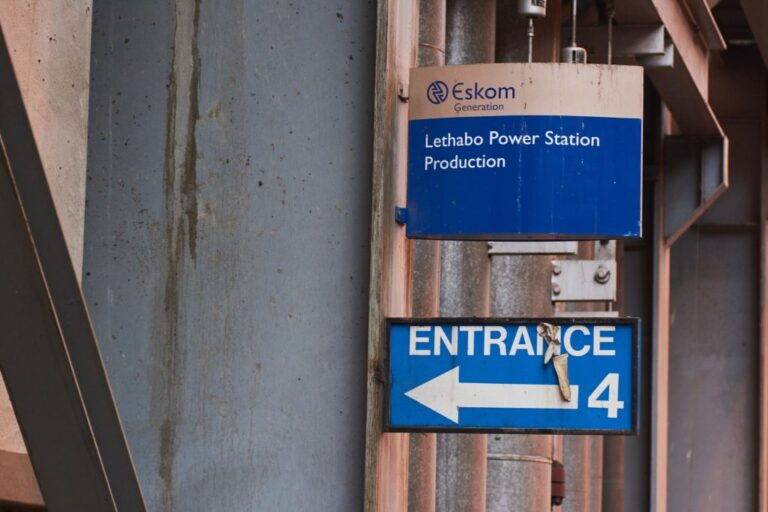You can also listen to this podcast on iono.fm here.
ADVERTISEMENT
CONTINUE READING BELOW
Download the free LiSTN audio app on Google Play, Apple or here.
JEREMY MAGGS: Well, it doesn’t make for pretty reading, does it? Eskom has unveiled its financial results and an increase in net loss after tax of R24 billion. Also more worrying, the energy availability factor plunging from 62%, just over, to 56.03%.
Read: Eskom doubles losses to R24bn
I want to talk to Nick Hedley, the founder of The Progress Playbook, it’s a news and analysis platform focusing on policies and projects that are succeeding in driving sustainable development. He’s a key voice in the electricity debate in South Africa. Nick, can you help us understand how Eskom has arrived at this precarious financial situation, worse than many people thought it was, and are you surprised?
NICK HEDLEY: Hi, Jeremy, thanks for having me. Ja, so it’s, as we all know, it’s been a steady, slow long decline. But I think everyone expected bad results, but maybe not quite as bad as this; it’s pretty dire. The biggest two issues are obviously the performance of Eskom’s coal fleet, which has been steadily deteriorating because there’s not been enough capacity online, so they’ve been run extremely hard and not maintained.
It was almost inevitable that these very old coal plants would start deteriorating and breaking down more often, and more load shedding means less sales for Eskom, so less revenue.
The second reason is that Eskom still, despite all of the massive tariff increases that we’ve all been subjected to, still isn’t making enough money to cover its costs. So its tariffs are still not cost-reflective, and that’s just not enough to cover its costs, let alone ramp up maintenance to the levels needed.
So basically, Eskom selling prices are still not actually high enough, which is quite scary.
JEREMY MAGGS: Nick, it surely cannot continue if this trajectory remains.
NICK HEDLEY: No, so Eskom in its results, it forecast making a similar loss this year, and it’s normally quite conservative, so it could become even worse than that. It’s a completely unsustainable trajectory for a couple of reasons. It’s spending a huge amount on running very, very expensive gas turbines to make up for the coal plants. Municipalities aren’t paying Eskom, so they now owe Eskom about R60 billion. Eskom had to fork out R72 billion just to service its debts, which is massive. So it’s a very, very unsustainable path with no real clear fix or solve to it on the horizon. It all really, unfortunately comes down to the fact that its tariffs aren’t cost-reflective.
Read: ‘Time for excuses over for Eskom’ says Cassim as loss doubles
JEREMY MAGGS: Nick, it also says, or highlights the importance of clean energy solutions. But once again, we’re also behind the curve on that, are we not?
NICK HEDLEY: Very, very far behind the curve. Since 2015, we haven’t really added much new clean energy capacity. Unfortunately, our new build programme was halted in 2015 and we haven’t really caught up since.
We do have a tiny fleet of wind and solar connected to the grid and Eskom’s results showed that wind farms have reduced load shedding during the evening peak period by 1.5 stages on average, and that’s just with a very small existing fleet. So if we did manage to scale it up, we would make a big dent in load shedding, but things are moving far too slowly, unfortunately.
ADVERTISEMENT
CONTINUE READING BELOW
Read: Eskom didn’t really keep the lights on because of the rugby
JEREMY MAGGS: Nick, one gets the impression, having watched those results being presented yesterday, that this is an organisation that is simply thrashing around. Maybe let’s focus on the debt, municipal debt R58.5 billion, R60 billion, obviously contributing to Eskom’s financial instability. Is there any way or are there any steps that can be taken immediately to address this growing debt, which might just unthrottle the situation slightly?
NICK HEDLEY: It’s a very, very complicated one. Municipalities are deeply indebted themselves, a lot of them aren’t actually even in a position to pay Eskom back its debt. Then the government has obviously come to the party with a debt relief package for Eskom, but it’s also very limited in what it can do because South Africa itself is on a very unsustainable fiscal trajectory.
Read: Good news about SA’s electricity crisis
So there’s not a hell of a lot more that government can do. It could arguably offer a bit more debt relief. But no, there’s not really a very clear path out, which is the most concerning thing.
JEREMY MAGGS: They also outlined their recovery plans yesterday, and part of the process was to enhance generation performance and plant reliability, we’ve heard that before. But in the introduction to our conversation, I mentioned the declining energy availability factor.
Again, there’s a disconnect between the two and concern that the plans to enhance that generation performance are simply not going to happen or are going to be very difficult to implement.
NICK HEDLEY: Ja, so I think there’s one positive thing that wasn’t in the results, but last week Eskom’s energy availability factor increased for the week to above 60% for the first time this year. So there is some evidence that things are moving in the right direction, but obviously it’s a very precarious state.
The plants could trip at any time, they’re old and haven’t been looked after.
There’s also not much evidence that maintenance has been ramped up to the levels where it needs to be. So that, again, will need significant investment and the question is, where will the money come from?
JEREMY MAGGS: Nick, I wish I could say I enjoyed talking to you today, but I need to find another word. Founder of The Progress Playbook, thank you very much indeed, Nick Hedley.

